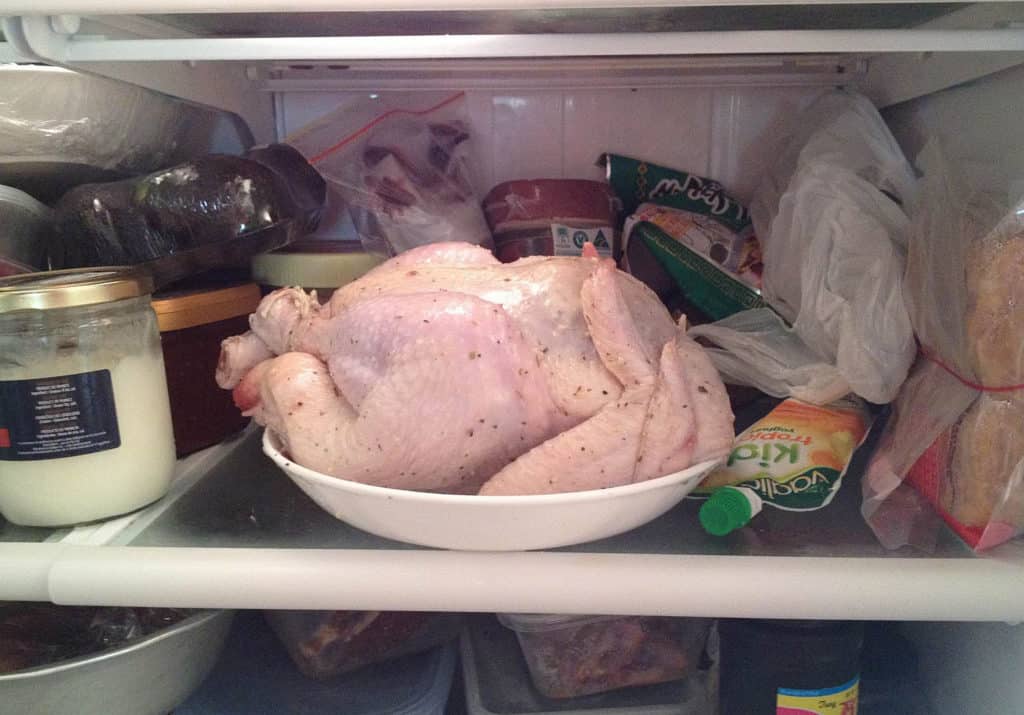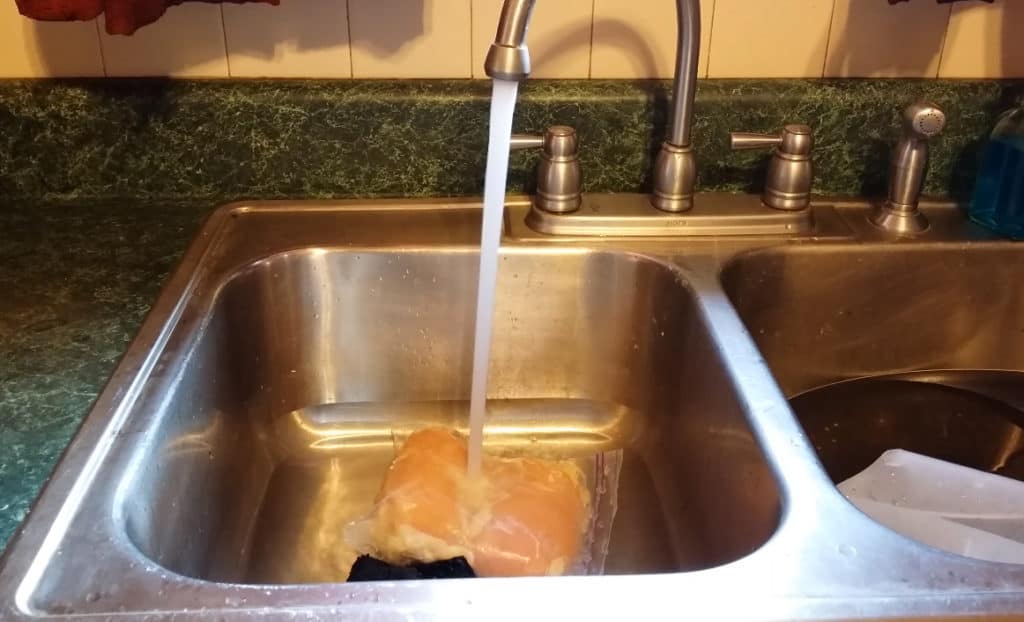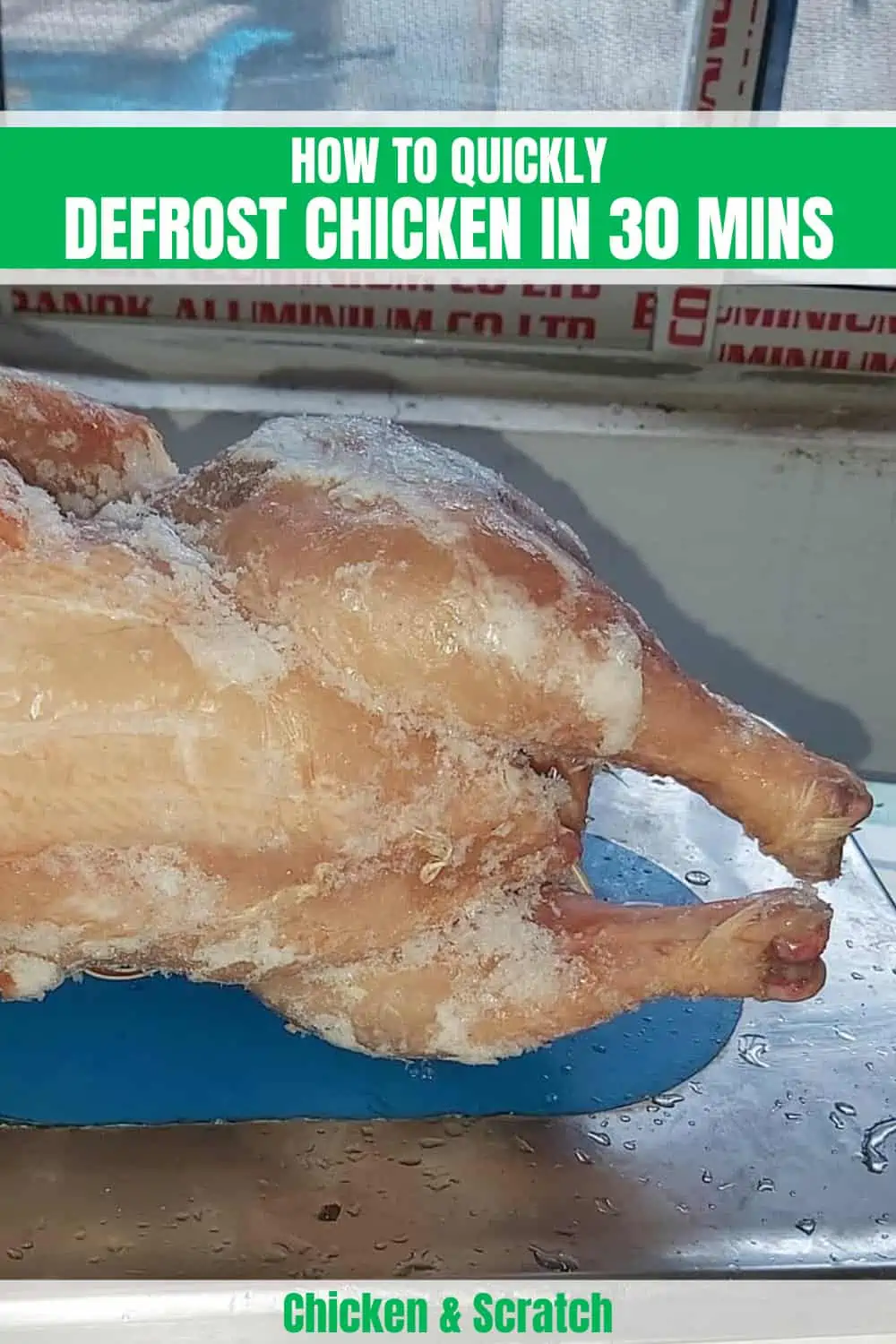Chicken may well be the most ubiquitous protein in the United States, with the phrase “tastes like chicken” used to describe every possible taste from boring to safe. However, no other protein that a home cook is likely to face on a weekly basis has as much risk of carrying foodborne pathogens.
This is all the more true when it comes to defrosting chicken. While chances are that many Americans have chicken in their freezers right now, fewer know how to defrost it in a manner that is safe, efficient, and preserves the taste of the chicken. Luckily, there are a number of methods that allow home cooks to efficiently defrost chicken, preserving taste and safety.
What Happens When Defrosting Chicken
To best understand how to defrost chicken, it is crucial to understand what goes on at a cellular level. When chicken is frozen, water crystals form. Jolting those crystals can result in ruptures, which release liquid from the meat, making it less juicy. This is part of the reason behind the freezer burn.
Additionally, there is a narrow band in which one is trying to hit when defrosting chicken, only from around 33 to 40 degrees. Any cooler and the chicken won’t defrost; any warmer and there is a risk of increased bacteria growth.
Whole vs. Cut Chicken
Before proceeding, it is crucial to know if the chicken is defrosted as a whole bird or simply a piece. Pieces of chicken can be defrosted faster than a whole bird, and it has everything to do with shape and volume.
After all, a chicken breast has less distance between the center of the piece and the exterior, where the defrosting heat source is coming from. However, due to the cavity inside a chicken, a whole chicken will defrost faster than a block of chicken wings or breasts. Therefore, make sure that when freezing meat, pieces are arranged in a flat manner.
How to Safely Defrost Chicken

By far the safest way to defrost chicken is in the refrigerator overnight. There are a number of advantages to this. First, because it is slow, the resulting damage from bursting water crystals is minimized. That means that the final product will be juicer, firmer, and overall much better tasting.
Second, defrosting chicken in the refrigerator means that the meat will not spend any time in the danger zone. The danger zone for foodborne bacteria is from 40-140 degrees; above or below this, bugs like E. Coli and Salmonella find it much more difficult to survive.
By keeping the chicken below 40 degrees, which any good refrigerator should do, there is no real chance of these bad bacteria getting any chance to grow.
To defrost chicken in the fridge, place the piece to be defrosted (preferably in the bag it was frozen in) in a shallow rimmed dish and leave overnight. A shallow dish is used in case the chicken leaks out of the bag;
otherwise, the fridge would have to be thoroughly cleaned in such a case to prevent the risk of E. Coli or Salmonella. If the fridge has cold spots, try to distance the chicken from these areas, but make sure that it doesn’t get above 40 degrees. This method typically takes at least 12, if not 24 hours, and will take longer with a whole bird.
Quickly Thawing Chicken
Still, there are those times when chicken is needed as quickly as possible, and that calls for something a bit more drastic. To defrost a piece of chicken in as little time as possible while still maintaining juiciness and texture, submerge it, while still in the bag, in water that is above 140 degrees.
This limits the risk of E. Coli or Salmonella, but it is still not as safe as defrosting in the fridge. However, if done properly, it can work; After all, chicken needs to be cooked to a safe minimum internal temperature of 165 degrees Fahrenheit for a reason.
When using this method, make sure that the water stays above 140 degrees, adding new water whenever the temperature dips too low. Additionally, make sure that the chicken is moved around periodically so that it does not develop a cold spot within the water.
Finally, make sure that the vessel of water is large enough; a sink half full of hot water is generally best for a small bird or a few pieces.
At this rate, a couple of chicken breasts can be defrosted in as little as 30 minutes.

Finally, there is one way to defrost chicken faster than even this, but doing so sacrifices quality. Putting the chicken in the microwave and using the defrosting will get the chicken defrosted quickly, but there is substantial loss in quality as a result.
After all, all those water crystals that were gently being coaxed back to liquid form before are essentially hit with a lot of energy, causing some of them to skip becoming water and turn right into steam. This does the job quickly, but it also damages the chicken’s texture.
Combined with the fact that microwaving often cooks large portions of the chicken before the rest of the piece is still frozen, it is easy to understand why microwaving is only recommended in a few instances.
Don’t Do This!
No matter what technique is used, make sure that the chicken is not just left out on the counter to defrost. Doing so may seem efficient, and if food safety was not a concern, it would work. However, chicken is especially tasty to all those bacteria that can allow people to get really sick. As such, it is absolutely discouraged to defrost chicken on a countertop.
Summary
Remember that defrosting chicken can be done quickly and safely, while preserving considerable taste, by keeping in mind the potential growth of bacteria as well as the need to minimize bursting water crystals. Refrigeration overnight or a hot water bath does this while microwaving is an imperfect solution. In any case, never just leave chicken to defrost on a countertop.

Joseph Hudson has been raising chickens for over 15 years. In 2018, he completed the Agriculture & Natural Resources program at Mt. San Antonio College. He currently raises over 1400 chickens on his 7.5-hectare farm. He keeps sharing his experience on raising healthy and happy chickens on Chicken Scratch The Foundry.








